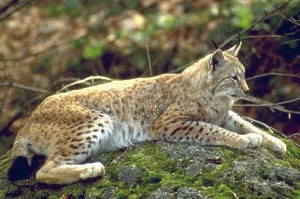|
Weight: 30-65 pounds
Head/Body: 40 inches
Tail: 7 inches
Subspecies: 5
The European, Eurasian or Northern lynx is generally much larger than its Canadian counterpart. The coloration and markings are more noticeably spotted, although this varies extensively with its location. The Eurasian lynx was once found in the forested areas throughout most of Europe, the Middle East and Asia.
However, today the range of the cat has been drastically reduced in Europe, and they are only found in some of the northern countries, in parts of Greece and Czechoslovakia. Recently the Eurasian Lynx has been reintroduced to parts of Germany, Switzerland and Austria, where it is beginning to reestablish small numbers. In these areas though, local farmers and game hunters are suggesting that the cat is competing for farm animals and deer population. Monitoring of the lynx by conservation authorities in these areas continues to gain more information on the cat's hunting behavior. The debate, which is common in areas of wild cat populations, is at odds with local inhabitants and seems to continue.
Further to the east, across Asia, the lynx has a stronger foothold and are found in the rocky terrain away from forested areas. In general the Eurasian lynx is not as dependent on hare and rabbit as their main source of prey, as their North American counterpart, the Canadian lynx. In various studies, deer have been seen to form a major part of the Eurasian lynx diet, but in summer months the intake of rabbits increases. As with the Canadian lynx, female lynx seem to take less deer than males.
The Eurasian lynx is listed as Near Threatened (NT), and is close to qualifying for, or is likely to qualify for, a threatened category in the near future, on the IUCN Red List of Threatened Species.

|



